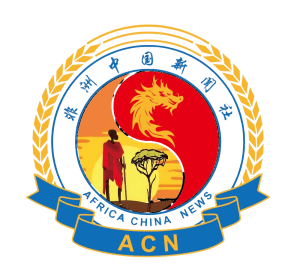Subscription required
Senegal and China, two countries from vastly different continents, have cultivated a growing and mutually beneficial partnership over the years. While the relationship between the two may not always be in the spotlight, it’s undeniable that it has evolved in ways that are shaping the economic, social, and political landscape of both nations. The success of this partnership can be seen through various indicators, many of which can be captured in charts that tell the story of Senegal-China relations in a clear and easily digestible way.
A Steady Surge in Trade Relations
One of the most significant aspects of Senegal-China relations is their trade relationship. In the past two decades, trade between the two nations has grown at an impressive rate, turning Senegal into one of China’s key trade partners in Africa. In 2000, Senegal’s trade with China was relatively small, but by 2022, this trade volume had skyrocketed, reflecting both countries’ increasing interest in mutual economic cooperation.
Chart 1: Bilateral Trade Volume between Senegal and China (2000–2022)
| Year | Trade Volume (in Billion USD) | |
| 2000 | 0.12 | |
| 2010 | 1.2 | |
| 2020 | 3.4 | |
| 2022 | 5.0 |
From 2000 to 2022, there was a steady increase in trade, with Chinese exports to Senegal primarily consisting of machinery, electronics, textiles, and construction materials. Conversely, Senegal exports commodities like phosphates, mineral fuels, and agricultural products. The growing trade volume has been driven by several factors, including China’s “Belt and Road Initiative” (BRI), which has sought to enhance infrastructure and connectivity between China and African nations like Senegal.
China’s Growing Footprint in Senegal
Chinese investments in Senegal have also expanded in recent years. These investments are particularly notable in the infrastructure sector, where China has financed and built critical projects such as roads, ports, and even railways. The Dakar-Diamniadio Toll Highway, a key project built by China, is a testament to the increasing presence of Chinese capital in Senegal’s development projects.
Chart 2: Chinese Investment in Senegal (2010–2022)
| Year | Investment (in Million USD) |
| 2010 | 120 |
| 2015 | 280 |
| 2020 | 1,000 |
| 2022 | 1,350 |
China’s role as an investor in Senegal has been growing rapidly, particularly in infrastructure. The Dakar-Diamniadio Toll Highway (completed in 2019) is a prime example of Chinese financing, which accounted for much of the $1.2 billion cost of the project. Another key example is the Dakar-Diamniadio International Airport, which is being expanded through Chinese investments to accommodate more passengers and improve global connectivity.
These projects have played a critical role in boosting Senegal’s infrastructure, opening the door for increased foreign trade and tourism. But they also point to the broader picture of China’s strategic investments in African nations to enhance its trade routes and global influence.
Chinese Aid, Assistance to Senegal’s Development Goals
China has also become one of Senegal’s key partners in terms of foreign aid. This aid is directed at various sectors, including healthcare, education, agriculture, and poverty reduction. China has provided funding for multiple projects that support Senegal’s development goals, many of which align with the country’s Plan Senegal Emergent (PSE), a strategy designed to accelerate economic growth and industrialization.
Chart 3: Chinese Foreign Aid to Senegal (2010–2022)
| Year | Aid Volume (in Million USD) |
| 2010 | 50 |
| 2015 | 150 |
| 2020 | 300 |
| 2022 | 400 |
In 2020, China increased its foreign aid to Senegal by nearly 50% to support the country’s efforts in mitigating the impact of the COVID-19 pandemic. In addition to this emergency support, China has consistently invested in infrastructure projects, including hospitals and educational institutions, to foster long-term development.
China’s Role in Senegal’s Industrialization
Senegal’s government has expressed its desire to move beyond agriculture and diversify into more industrial activities. China, through investments in energy and manufacturing, has played a central role in this transformation. A key example is the development of Senegal’s oil and gas sector, with Chinese companies such as Sinopec investing heavily in exploration and extraction projects.
Chart 4: Growth in Energy Sector Investments (2010–2022)
| Year | Investment (in Million USD) |
| 2010 | 100 |
| 2015 | 250 |
| 2020 | 600 |
| 2022 | 850 |
The energy sector in Senegal has greatly benefited from China’s investments, including the building of power plants and renewable energy infrastructure. Through projects such as the Senegal-Togo-South Africa power grid and wind energy farms, Senegal is on its way to becoming a more energy-secure nation, with the help of Chinese technology and expertise.
Strengthening People-to-People Ties via Cultural Exchange
Beyond economics and infrastructure, cultural exchange has played an essential role in strengthening Senegal-China relations. The two nations have participated in various cultural and educational exchanges over the years, with China offering scholarships to Senegalese students, as well as organizing Chinese language courses and cultural events in Senegal.
Chinese Scholarships and Senegalese Students in China (2010–2022)
| Year | Number of Scholarships | Number of Students in China |
| 2010 | 50 | 200 |
| 2015 | 120 | 350 |
| 2020 | 250 | 500 |
| 2022 | 300 | 650 |
The rise in scholarships and students moving between the two countries underscores the growing mutual interest in fostering people-to-people ties. Over time, these exchanges have allowed for greater understanding and collaboration in a variety of sectors, including business, technology, and cultural diplomacy.
The Belt and Road Initiative (BRI) and Senegal
Senegal is one of the most active participants in China’s Belt and Road Initiative, which is designed to improve trade routes and infrastructure connectivity across Asia, Africa, and Europe. Through BRI, China has helped Senegal enhance its transportation network, including the building of roads, railways, and ports that facilitate trade between China and Africa.
Chart 6: BRI Projects in Senegal (2015–2022)
| Year | Number of Projects | Estimated Investment (in Billion USD) |
| 2015 | 2 | 0.5 |
| 2017 | 4 | 1.2 |
| 2020 | 7 | 2.3 |
| 2022 | 10 | 3.5 |
These BRI projects are helping to transform Senegal’s economy by improving its connectivity to global markets and providing jobs for local workers. Furthermore, they are contributing to Senegal’s overall economic growth by ensuring that infrastructure keeps pace with the country’s ambitions.
The partnership between Senegal and China is multifaceted, covering trade, investment, development aid, energy, culture, and infrastructure. Through the various charts presented, it’s clear that the relationship between the two nations has flourished over the years, with China playing a key role in Senegal’s economic and infrastructural development. The continued growth of this partnership holds much promise for both countries, and the future looks bright as they work together to build a prosperous and sustainable future.



